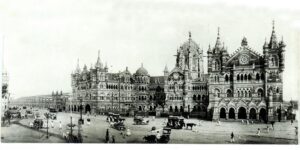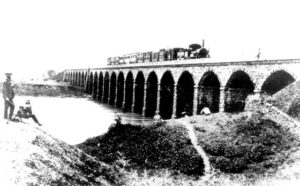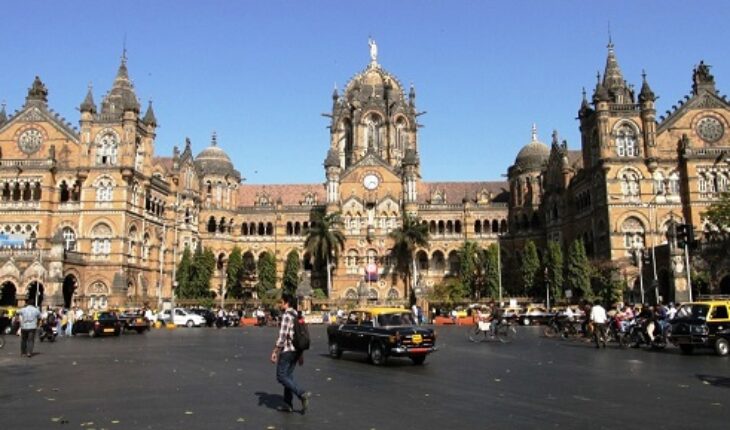The Central Railway quietly celebrated its 67th anniversary recently while highlighting its unique history in the era of the Indian Railways, where the local railways transport 2.2 billion passengers annually — about a third of the world’s population.
 This railway had been mute witness to a tragedy on November 26, 2008 when its Victoria Terminus – now known as Chhatrapati Shivaji Maharaj Terminus or CST – came under a brutal attack by terrorists in which 58 people, most of them distance-travellers asleep on their luggage while waiting for their respective trains, lost their lives and the city of Mumbai – also known as the New York of the East and The City That never Sleeps lay in shock till the terrorists were either caught or eliminated.
This railway had been mute witness to a tragedy on November 26, 2008 when its Victoria Terminus – now known as Chhatrapati Shivaji Maharaj Terminus or CST – came under a brutal attack by terrorists in which 58 people, most of them distance-travellers asleep on their luggage while waiting for their respective trains, lost their lives and the city of Mumbai – also known as the New York of the East and The City That never Sleeps lay in shock till the terrorists were either caught or eliminated.
However, the Central Railways rose like the proverbial “Phoenix” from those grim memories to maintain its busy schedule of business as usual, as millions of passengers — tourists, businesspersons and others – continue to pass through its portals on its many stations along its route.
Recently, its Dombivali station was noted as the +most-crowded and fare-generating+ suburban station in the Mumbai division on Central Railway (CR), where total 2,33,635 passengers passed through daily with Rs 14,94,538 being collected every day.
The Central Line stretches across 54 km, from CST to Kalyan, where it branches out, with the line going to Kasara being an additional 67 km, and the line that carries on to Khopoli adding another 61 km.
Flashback to 67 years ago when, on 5th November 1951, the Central Railway was formed by integrating Nizam State, Scindia State and Dholpur State Railways, with GIP Railway.
 Then, at half-past-three in the afternoon of Saturday, the 16th April 1853, a new system started in Mumbai (then Bombay) – the First Railway in the East. The day was declared a public holiday. Bori Bunder, the point of departure was thronged by a multitude, where bands played and guns were fired from the Fort’s (In Fort area of then Bombay – now renamed Mumbai) ramparts when, at the signalled moment, there steamed out from a tiny wooden station, a little train hauled by three engines that heralded the dawn of the Railway Era in India.
Then, at half-past-three in the afternoon of Saturday, the 16th April 1853, a new system started in Mumbai (then Bombay) – the First Railway in the East. The day was declared a public holiday. Bori Bunder, the point of departure was thronged by a multitude, where bands played and guns were fired from the Fort’s (In Fort area of then Bombay – now renamed Mumbai) ramparts when, at the signalled moment, there steamed out from a tiny wooden station, a little train hauled by three engines that heralded the dawn of the Railway Era in India.
As the years passed, the Great Indian Peninsula Railway expanded. By merging the Indian Midland Railway Company with the G.I.P. Railway Company in 1900, its frontiers were extended from Delhi in the North, Kanpur and Allahabad in the North-east and Nagpur in the East to Raichur in the South-east. Thus, through connection from Bombay was obtained to almost all parts of India. The route mileage of the G.I.P. Railway was 1,600. (2575 km)
Statistics over the 67 years highlight the Central Railway’s Business History.
| Particulars | On formation 1950-51 | On re-organisation 2003-04 | On date 2018-19 (Apr-Sep) |
| Passenger Earnings (in Rupees crore) | 18.64 | 1,805.97 | 2,792.05 |
| Goods Earnings (in Rupees crore) | 24.98 | 2,298.58 | 4,108.82 |
| Number of passengers (in million) | 224 | 1,180 | 908 |
| Originating Loading (in million tonnes) | 16.58 | 42.24 | 29.34 |
| Route Km | 8,734 | 3,799 | 4,114.59 |
| Number of suburban services daily average | 519 | 1,177 | 1,776* |
(includes Pune suburban also)
In October 1966, one more railway — South Central Railway — was formed by merging Solapur Division from CR and Secunderabad, Hubli, Vijayawada Divisions from SR. On 2nd October 1977, Solapur Division was merged with CR and Guntakal Division from SR was included in South Central Railway.
Later, in 2003, seven more zones were created wherein, Jabalpur and Bhopal Divisions of Central Railway were included in West Central Railway and Jhansi Division was included in North Central Railway.
At present, the Central Railway has 5 divisions — Mumbai, Bhusaval, Nagpur, Solapur, Pune — with a network of 466 stations through which average 569 mail/express/passenger trains run daily.






